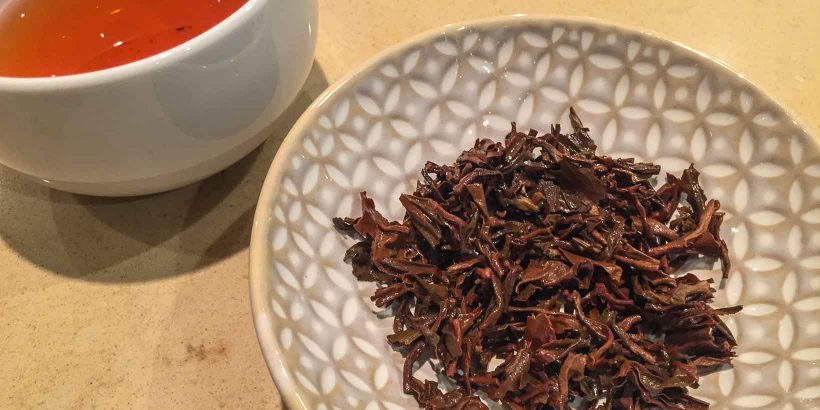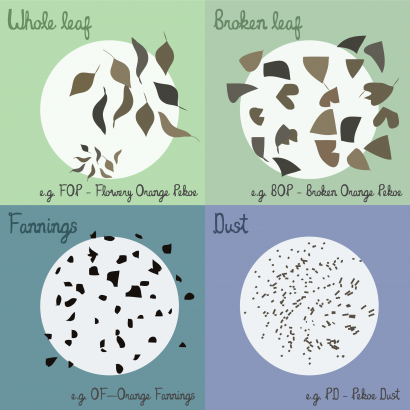“Do you have Orange Pekoe?”
This is a common question at food events, and one that always makes us pause. This is a complex topic – it’s not a question that’s easily answered.
Therefore, today we’re going to explain everything that you need to know about this oddly-named tea.
The basics
When we talk about Orange Pekoe, we’re referring to a wide range of black tea grades.

To be more precise, it refers to the tea leaves next to the buds. There’s a hierarchy – the larger leaf below the buds is called Pekoe, and smaller leaves and buds that are above Orange Pekoe use terms such as Flowery, Tippy, Finest, and Special.
Where are the oranges?
Despite the name, there are no oranges in this tea. It has nothing to do with orange flavourings, oils, or leaves. So, where does the name come from? It’s not clear, but there are a couple of theories:
- The ‘orange’ could come from the copper colour of these black teas
- It could also come from the Dutch royal house of Orange-Nassau, who played a large part in bringing teas to Europe.
What is Pekoe?
The origin of ‘Pekoe’ is even more uncertain. It is believed that it comes from the Southern Min Chinese words for white flower or white hair (白毫 – pe̍h-ho). This describes young tea leaf shoots, which are covered in fine white down. The buds and adjacent leaves are plucked from the shoots for high grades of black tea.
Incidentally, the Southern Min language is why English speakers call this drink ‘tea’, as opposed to ‘cha’ in some other languages. Xiamen (formerly Amoy) was a large centre for tea trade, and those countries which traded there adopted the local name —tê.

Despite its origins, Pekoe is a term that is used almost entirely by non-Chinese speaking countries. It is part of a European grading system, which was introduced when they began to grow tea in countries such as India, Nepal, and particularly Sri Lanka.
Why is it important?
This term is a good one to look out for when buying tea. It is only used in the highest grades of tea such as Whole Leaf and Broken Leaf. You’ll never see it in lower grades such as Fannings or Dust. (The grades commonly used in teabags.)
Therefore, there are different grades which depend on the wholeness of the leaf and its size. For example, these are some of the grades available with Whole Leaf and Broken Leaf tea.
Whole Leaf
- OP1 — usually delicate with a long, wiry leaves and pale liquor
- OPA — stronger, also with long leaves which can be tightly wound or almost open
- OP — main grade which sits between OP1 and OPA with long wiry leaves without tips
- Tippy Golden Flowery OP / TGFOP — Has a high proportion of very young (flowery) golden tea tips. Usually only used in Darjeeling and Assam.
- SFTGFOP — Finest Tippy Golden Flowery Orange Pekoe: can indicate the very finest tea
Broken Leaf
- BP — Broken Pekoe: Most common broken pekoe grade.
- BOP — Broken Orange Pekoe: Main broken grade.
- TGF BOP1 — Tippy Golden Flowery Broken Orange Pekoe 1: High-quality leaves with a high proportion of tips. Finest broken First Grade Leaves in Darjeeling and some parts of Assam.
Therefore, when people ask if we have any Orange Pekoe, we always say yes. This is because we only stock the highest quality black teas. If our loose leaf teas are not labelled as Orange Pekoe, then it is because they’re from countries that use a different grading system. For a further explanation of the different grades of tea, head to our post about tea leaf grading.

